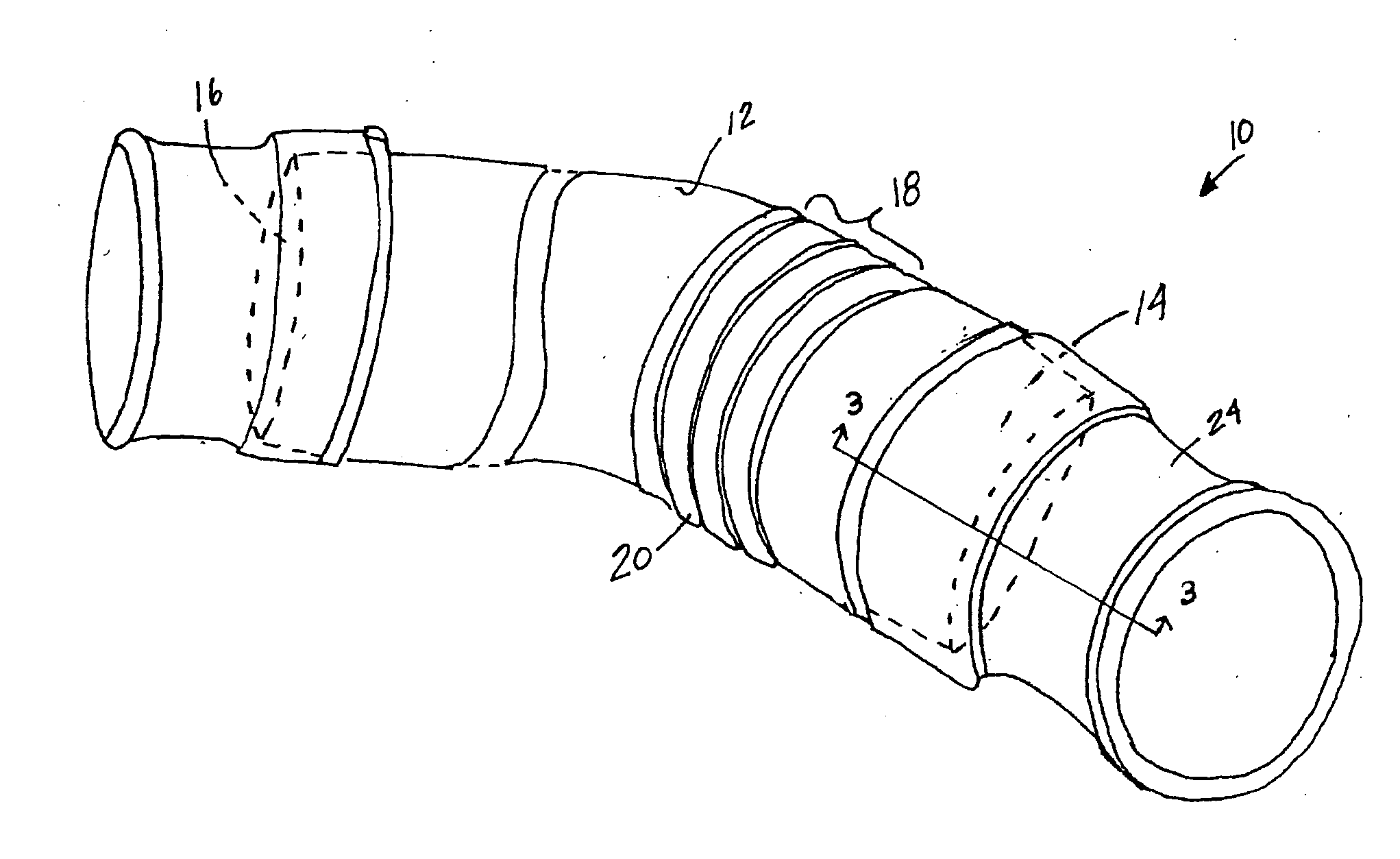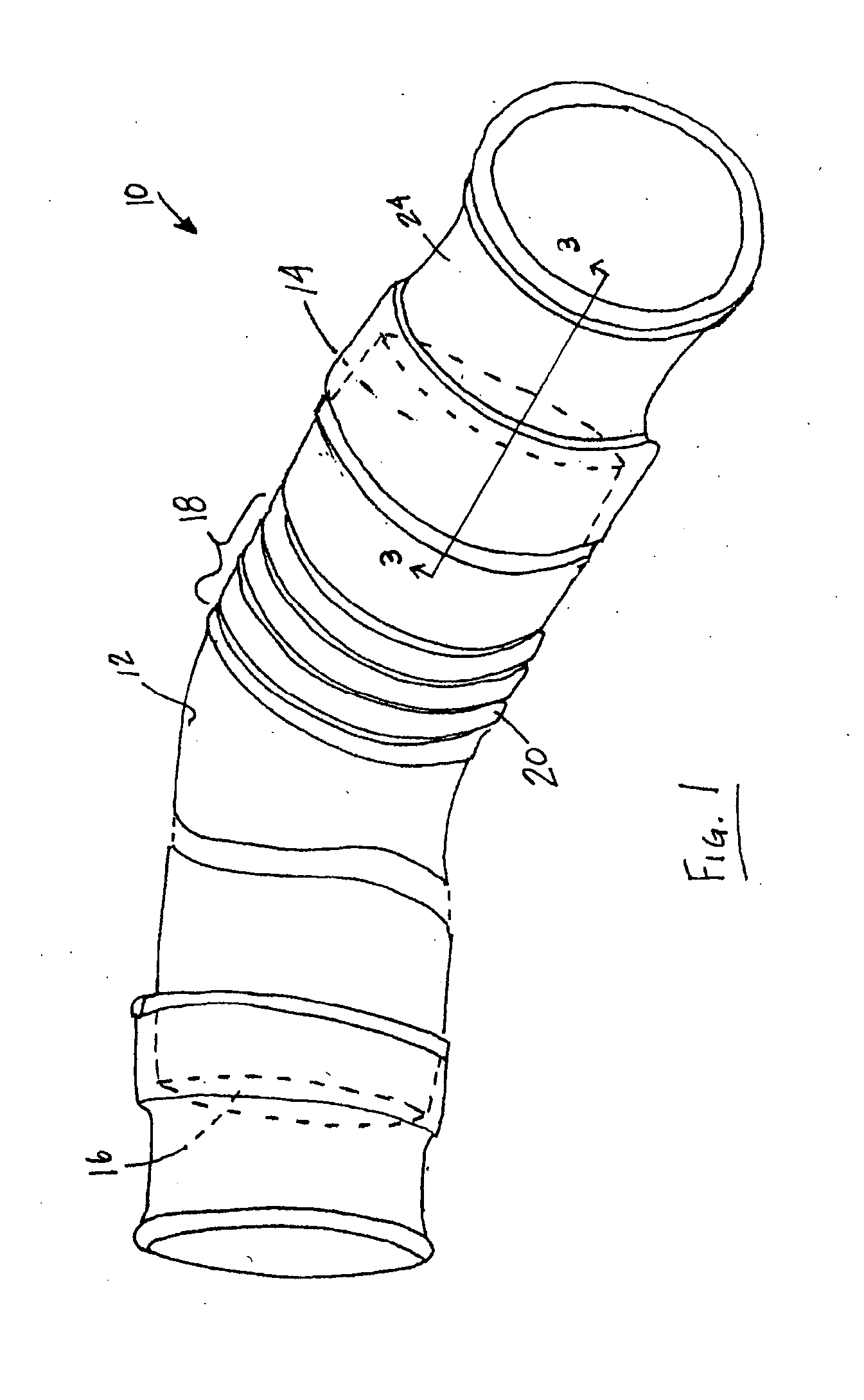Two-shot or insert molded cuffs for welding onto clean air ducts
a technology of clean air ducts and molded cuffs, which is applied in the field of air ducts, can solve the problems of high cost burden, hampered approach, and material that cannot readily conform to sealing surfaces to make airtight seals, etc., and achieves the effect of enhancing the ultimate weld and being less expensiv
- Summary
- Abstract
- Description
- Claims
- Application Information
AI Technical Summary
Benefits of technology
Problems solved by technology
Method used
Image
Examples
Embodiment Construction
Definitions:
[0034] Thermoplastic Elastomer (TPE): a diverse family of rubber-like materials that, unlike conventional vulcanized rubbers, can be processed and recycled like thermoplastic materials. Typical examples include blends of “hard” crystalline, semi-crystalline, or glassy polymers (for instance those having a Tm greater than about 110° C. or Tg greater than about 60° C., as measured by differential scanning calorimetry (DSC), more preferably with amorphous or low-crystallinity polymers (Tm less than about 90° C. or Tg less than 60° C. by DSC). Examples of hard polymers include the non-polar and polar engineering resins such as polypropylene, polyethylene, polyamide, polycarbonate, and polyester resins. The “soft” polymers include most rubbers, particularly the non-polar olefin rubbers, for hard polyolefins, and polar rubbers for polar hard resins. Non-polar rubbers include ethylene-propylene rubber, very low density polyethylene copolymers comprising C4 to C8 α-olefin or v...
PUM
| Property | Measurement | Unit |
|---|---|---|
| Tg | aaaaa | aaaaa |
| Tg | aaaaa | aaaaa |
| Tm | aaaaa | aaaaa |
Abstract
Description
Claims
Application Information
 Login to View More
Login to View More - R&D
- Intellectual Property
- Life Sciences
- Materials
- Tech Scout
- Unparalleled Data Quality
- Higher Quality Content
- 60% Fewer Hallucinations
Browse by: Latest US Patents, China's latest patents, Technical Efficacy Thesaurus, Application Domain, Technology Topic, Popular Technical Reports.
© 2025 PatSnap. All rights reserved.Legal|Privacy policy|Modern Slavery Act Transparency Statement|Sitemap|About US| Contact US: help@patsnap.com



